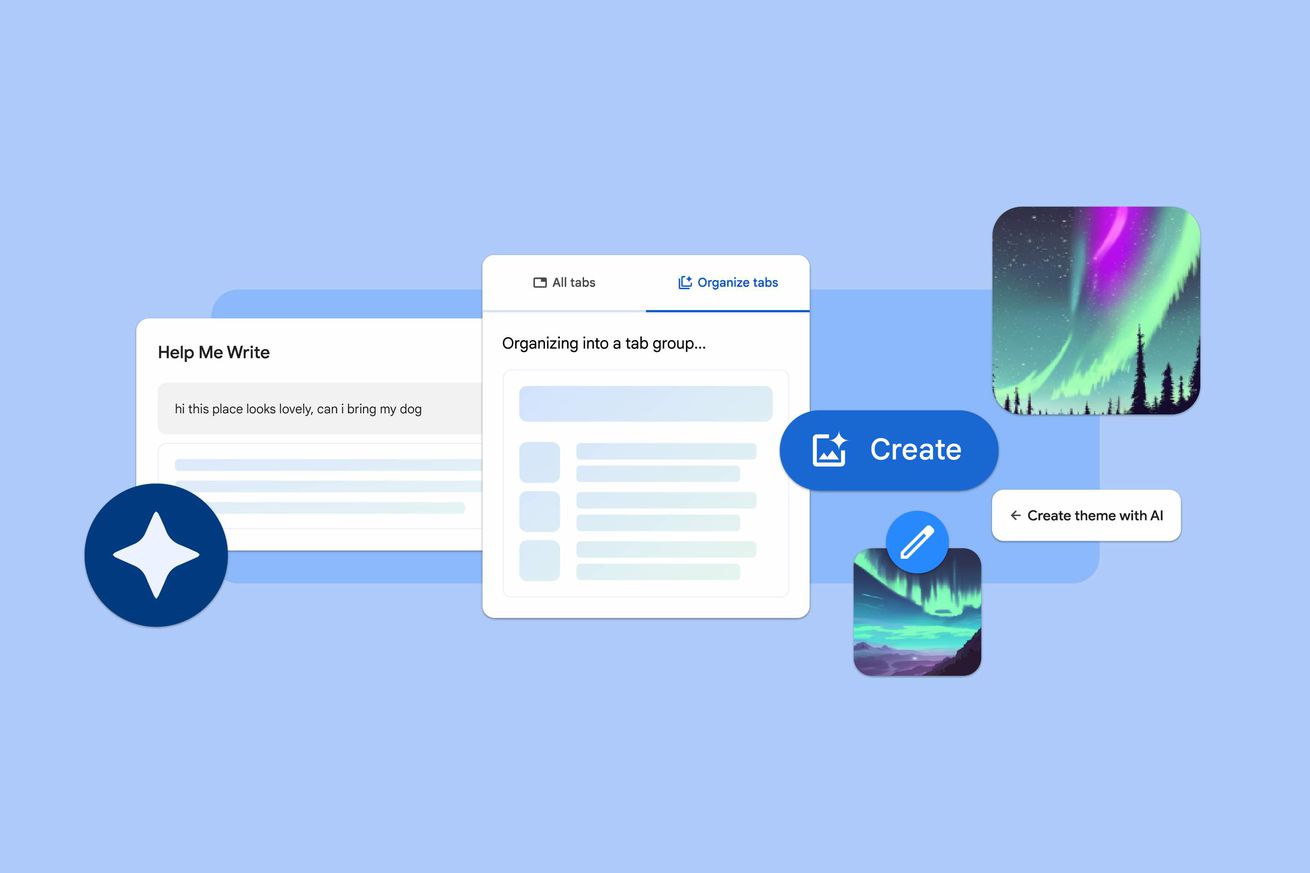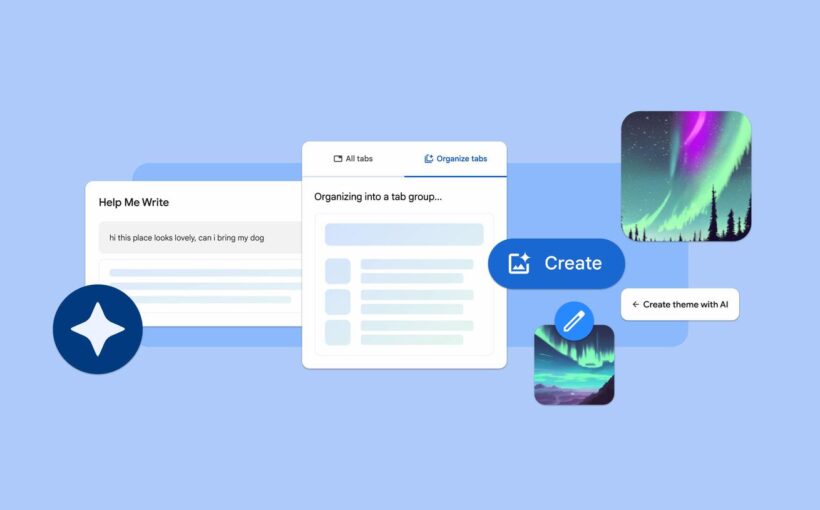
Google’s Chrome browser is leaning into AI in a big way. Rather than just shove a Bard sidebar into the browser, Google is rolling out a couple of features that tap into its models in order to hopefully make your browser a little more pleasant to use. They’re launching today in an experimental mode (you can go to settings and turn on “Experimental AI” to get them), and Google says they’re just the beginning of the AI browser takeover.
Chrome’s new Tab Organizer feature is the most compelling: you can right-click on a Chrome tab and select “organize similar tabs,” and Chrome will attempt to create a tab group filled with similar stuff. If you’re shopping for something, deep diving some esoteric subject, or just opening all your news reading tabs at once, Chrome will try to keep all that stuff together. Chrome’s tab groups are an underrated feature in general — they’re a helpful way to keep your stuff in order, but they do take some work to set up. This just makes it all automatic.
:no_upscale():format(webp)/cdn.vox-cdn.com/uploads/chorus_asset/file/25243597/GIF_Tab_Organizer_Chrome.gif)
The Chrome theme store is also getting an AI upgrade: you’ll be able to pick an image, a style, a color, and a few other things, and Chrome will automatically generate a browser theme to match. Google says it’s using the same text-to-image model that powers Android’s generative wallpapers, which, in my experience, are sometimes bizarre but mostly very cool.
The third new AI feature in Chrome, which is coming next month, is also a good hint of what’s to come for the browser. Google is adding its “Help me write” feature to every site on the web; you just right-click on any text box anywhere, select the feature, and Google’s AI will ask you what you want to write and then generate a first draft for you. Google suggests you might use “Help me write” to write reviews and emails or RSVP to parties.
That kind of web-wide AI integration is why Chrome could be such a powerful place for Google to integrate its Gemini model, the Bard assistant, and the rest of its nascent AI tools. Google’s search engine is already like a layer on top of the internet; the company obviously wants its AI to work the same way to help you not just find things but also interact with and create more things. We’re already seeing this show up in features like Chrome’s article summarization, and we’re going to see more of it soon.
If anything, Google’s late to the party here. Microsoft has been bundling similar AI features into Edge for the last year, and smaller players like Arc and Opera are doing their own AI integrations as well. Chatbots may be the hot new AI app right now, but browsers are a place where developers can integrate and access practically everything.
Google’s blog post announcing the new Chrome features says there’s more to come, including plans to integrate the new Gemini model “to help you browse even easier and faster.” There may not be a Bard sidebar yet, but don’t be surprised to see AI in every tab before long.



